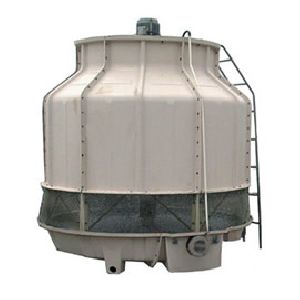
Counter Flow Cooling Tower
Get Price Quote
Cooling Tower Selection: Cooling towers are designed and manufactured in many sizes and configurations. Recognizing and understanding the different configurations and advantages is essential for specifying the most cost effective solution for the end user. The purpose of this bulletin is to highlight the differences between crossflow and counterflow cooling towers. Counter Flow Cooling tower overview: The primary task of a cooling tower is to cool water by rejecting heat into the atmosphere. This heat rejection is accomplished through the natural process of evaporation that takes place when air and water is brought into direct contact in the cooling tower. The evaporation is most efficient when the maximum water surface area is exposed to the maximum flow of air in the longest possible period of time. Cooling towers are designed in two different configurations, counterflow and crossflow. The specific configuration indicates the direction of the air flow in relation to the water flow. Cooling water distribution and air distribution are designed in a harmonious configuration and are equally important to determine a maximum efficiency in heat rejection. Counterflow towers Counterflow towers use, in general, low pressure spray nozzles to divide the hot water equally over the infill surface in fine droplets. A drift eliminator section above the water distribution rejects all the water in liquid form and keeps this in the circulating system. Only water evaporated in the air leaves the tower with the saturated air. A nozzle distribution is sensitive to changes in water flow thus it affects the over all efficiency. The air movement is vertically through the fill in counter flow to the downwards fall of the water. Counterflow towers have in general a smaller footprint than crossflow towers but require a higher pump head due to the typical distribution system with nozzles.